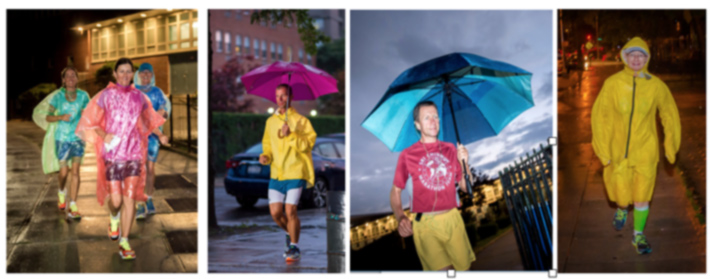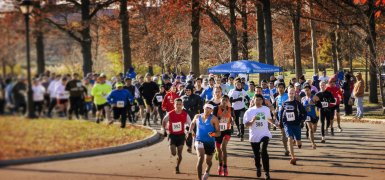This is the second in a series of articles from Smarana Puntigam, a 20-year veteran of multidays, on dealing with the many challenges that a multi-day race can throw up...
Rainy weather is a real challenge for a multiday runner. The rain can soak through and make you cold and miserable, and also lead to chafing and blisters. Keep an eye on the weather reports and try and anticipate what the rain is going to be like, and plan accordingly.
1. Keeping dry
There are multiple options that one can choose from, depending on the type of rain and your physical strength at the time.

- A cheap plastic raincoat is very efficient and keeps the rain out. However, if used for a long time, it may lead to overheating. After a while, you also get wet from inside because it is not breathable.
- Even with breathable jackets, overheating and sweating is an issue, particularly with heavy Gore-tex jackets and trousers. There are paper thin rain coats and trousers on the market, for example those from H2, that are breathable and also quite inexpensive. Some runners cut the legs of their trousers short to allow more breathing.
- Running with an umbrella has the advantage of not sweating as much, and also keeping the rain off your feet for a while. But in the course of time it needs extra energy to carry. Smaller umbrellas are better for running; for walking and shorter periods of time bigger umbrellas keep the feet dry for longer.
- Ponchos keep the rain off and allow the air to circulate inside, however they can be troublesome in windy conditions.
- For short spells of rain, you can also try and time your breaks to coincide with the rain. Some areas (such as NY) are more difficult to predict the exact arrival of weather than others due to competing weather systems, however usually the forecasting models 'converge' an hour or two before the rain starts and you should be able to plan with plus or minus 15 minutes accuracy.
2. Chafing
As soon as there is moisture and friction, the danger of chafing is very high.
- It might be possible to tape areas that are likely to chafe.
- Before you get a problem you can also apply petroleum or other creams that help to reduce the friction - in the long run, however, it is better to keep these areas dry. Corn starch is a very efficient solution, as is talcum powder with zinc, or powder with essential oils.
- Compression shirts and compression tights can be a big help in rainy weather to prevent chafing.
3. Blisters
The most important thing for a runner is to keep his/her feet dry. If your feet are wet, the likelihood of blisters multiply exponentially.
- If the rain is scheduled only as short and heavy rain, try to run with a large umbrella to keep the rain off your feet.
- Some runners apply coconut oil or olive oil to their feet, before it rains, so that the feet do not absorb water and crumple up the skin.
- Change shoes and socks as soon as the rain is over, and apply powder to your feet for faster drying.
- During longer spells of rain, you should not run for too long without changing your shoes and socks - a good rule of thumb is 90 minutes, although you may have to change sooner if your feet are more sensitive. A prepared runner will pack enough socks to last a long spell of rain. It is obviously more difficult to have as many shoes, but you should have at least 2 pairs on standby in addition to the pair you are running in. If it looks like the rain will last longer than a few hours, you can dry your shoes by stuffing them with tightly-rolled newspaper, which will absorb the water. A good helper saves you a lot of time here, especially because you may have to replace the newspaper after 90 minutes or so if the shoe got completely soaked. However if the rain persists and you need to use the shoe again after 3 hours, it should be dry or almost dry.
- When the sun is back out, remove the insoles and leave shoes and insoles to dry in the sun.



